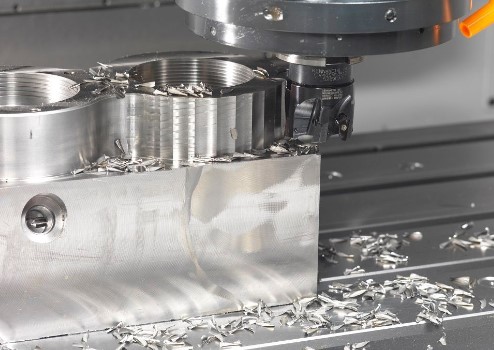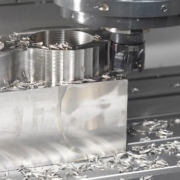How Much Do You Know For CNC Machining Services?
Organizations today are simplifying the product development process with CNC machining services. It helps speed up manufacturing machined parts with the highest degree of quality and accuracy, ensuring consistent product quality, increased production speed, and product efficiency. CNC machining include a range of complex processes like grinding, turning, routing, milling, punching, and lathing. In this article, we will tell you what exactly CNC machining is and its capabilities in detail.
What is High Precision CNC Machining?
In Computer Numeric Controlled (CNC) Machining, the technology uses fast, repeatable, and programmable systems to make parts more effective. It signifies one of two methods like 3D printing technology and FDM to generate prototypes from a digital software file. The operation is, therefore, more straightforward since the CNC controllers control the CNC devices. The method allows computers to produce objects with complicated geometries that may be impossible to achieve with a manual process. Replacing traditional instruments and expertise with high-precision machines will help factories save time and resources.

What are the benefits of CNC machining?
CNC machining is a subtractive production technique that uses computerized equipment to extract surplus content from the block and complete tasks using the CNC system and its tools. These are the advantages of CNC machining services:
- The fully automated operation results in reduced overhead costs.
- High precision, resistance, accuracy, and dimensions;
- It can handle accelerated prototyping with low to high volume requirements.
- A more simplified method of development
The CNC Machining Process:
This production method is a fully integrated machine that uses computer-aided manufacturing (CAM) software and computer-aided design (CAD). For components with a simplified architecture, the user may explicitly input command programs to the computer. However, for more complex structures, a CAM or CAD drawing must first be created and inserted into the device. Alternatively, use coordinate measurement machines (CMMs) to map the configuration directions to the device physically. The program would automatically build and provide the necessary steps for the system to produce the output.
There is less space for error since the computer would follow the letter’s instructions to produce the object. What’s much cooler is that this operation is easily repeatable, allowing the manufacture of similar parts more quickly. Previous applications of CNC machines are sluggish and are used only for high-volume processing. Now our technology has advanced considerably. Using complex technologies and tools now enables the direct introduction of computer-generated models into the application to make the operation much quicker. It also makes the use of low-volume CNC machining facilities to be more economical and practical.
Different Capabilities of CNC Machining:
CNC machining facilities to customers provide the following service of CNC machined parts from rapid prototyping to the manufacturing of parts and tools and the manufacture of end-use parts.
CNC Milling
It is the most traditional method that starts from a solid piece of raw material. This material forms by a CNC milling cutter operating in a circular motion. CNC milling machines can make parts of any shape, from primary keys to complicated parts, and can be horizontally or vertically aligned.
CNC Turning
This technology is a quick and fast-repeatable device that uses a lathe to extract excess material from a block by making grooves, gaps, and cuts. It uses a lathe or CNC spinning core that rotates at high speed as the cutting tool shifts in a rotating axis.
CNC Drilling
It is a cutting mechanism in which the block gets set and aligned with the cutting center as the tool rotates to make a circular hole.
CNC Milling and Turning
It is a fusion of two machining methods in which both the cutting tool and the workpiece rotate to create a component with a unique shape—the CNC computer design to perform several tasks in a short turn-around period.
Materials for CNC Machining Services
CNC machining facilities are the most cost-effective way of making a component or a prototype. There are several ways this machining method can make out of a complicated design and diverse materials. Companies ensure that the finest raw materials get used to producing a variety of goods with a high degree of integrity. Here are some of the components used by the Company for CNC Machining products.
- Copper
- Aluminum
- Titanium
- Polycarbonate
- Stainless Steel
- ABS
- PMMA/Acrylic
- Magnesium
- Brass
- Nylon
Machining Companies can also accommodate other fabrics of your choosing. With your CNC designs, companies will produce prototypes, limited batch models, and low-volume manufacturing of finished components.The following factors influence the entire CNC machining process:
- Blade angle
- Coolant
- Cutting parameters
- Speed and feed
- Machine tool
- Material
CNC machining is a subtractive production technique that uses computerized equipment to extract surplus content from the block and complete tasks using CNC machining. Make sure to choose the state-of-the-art CNC machined parts facility to increase your product’s sales and quality.

